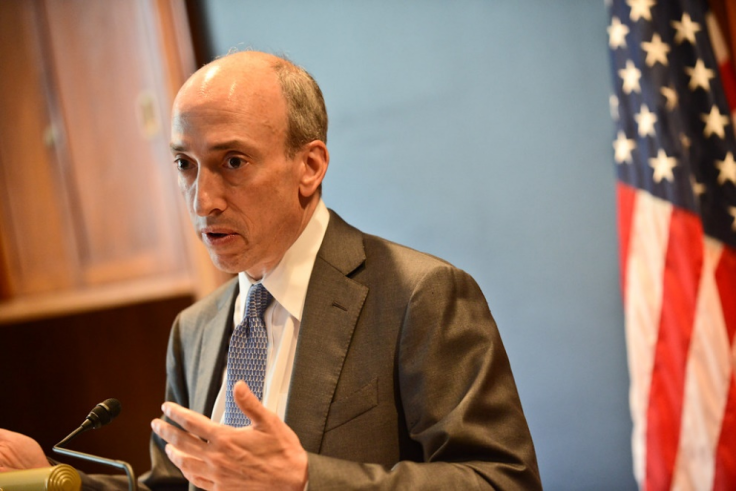An Elegant Solution to PFOF and Related Perversions
As Payment-for-Order-Flow (PFOF) is coming under increased scrutiny in both the US and EU, professional trading chiefs propose a unique solution of their own

The current concerns about Payment for Order Flow (PFOF) in both the EU and the US arise from the same fundamental regulatory flaw that has encouraged the cannibalization of retail order flow by dark markets and order types and that has fostered the proliferation of inverted markets.
All of these business models have arisen in response to the money available through manipulating a now obscenely wide minimum pricing increment, imposed by regulation, that is technologically outdated and irrelevant.
This simple mechanism has inadvertently created a transaction tax that is available for private collection. Consequently, many firmly entrenched business models are resisting significant change - to the detriment of the market at large, and retail investors in particular.
Historically, every few decades or so, a competition of interests between predominantly institutional investors and market makers breaks out. This typically involves the former asserting that the latter are demanding too much compensation for the risks inherent in the provision of market liquidity.
As trading volumes and investors' corresponding trading costs mount, they march to Washington (or wherever their securities regulators are based) and demand action.
The competing interests to either reduce or maintain this de-facto transaction tax eventually reach a compromise, and everyone gets back to making money.
Time and again, as the minimum pricing increment went from a quarter, through to an eighth, to 6.25 cents, and then ultimately a penny (in 2001) the result has, not surprisingly, been a boom in liquidity (trading volumes) and an actual reduction in risk being assumed by market makers because of the increased liquidity and better technology.
The veteran market participants will remember this. The problem is that it has been approximately 20 years since we last modified our regulations on this front and there has been a technological explosion since Reg NMS was introduced in 2005 and the ascendancy of High Frequency Trading in the years preceding the financial crisis.
As a result, market makers are delighted to provide liquidity for much less than a penny a share. Witness the proliferation of inverted markets, where market makers will gladly pay both the seller and the buyer a sliver of the tax for the privilege of pocketing the difference.
Traditional brokers have created their own private dark markets (at last count, well over 30 in the US alone) to mask their efforts to make a portion of this money when handling their client orders.
Pressure has been brought to bear on exchanges to create parasitic order types that allow participants to profit from the honest prices being disclosed by those in the visible markets and to jump the queue and make inside profits for brokers when ostensibly fulfilling their clients' trading requests.
Perhaps most insidiously, an oligopoly of massive internalizers and wholesalers have created mechanisms to short circuit the public markets and retain over 50% of the US order flow (primarily the natural, retail orders) in order to pay off the brokers delivering the orders and thereby retain the lion's share of this transaction tax for themselves.
Consequently, this order flow never sees the light of day. Order flow that would otherwise have contributed to the process of price discovery, to the benefit of everyone save those slinking in the dark.
Make no mistake, it may sound like pennies, but annually this represents billions of dollars that investors might otherwise have retained through higher sale prices or lower purchase prices - had the regulators not maintained this inappropriate tax. When someone tells you that they are giving you "free" trading, a smart investor should realize that they have actually become the product.
These regulations have been in force for decades, and many of these convoluted business models rely on their continued existence. It seems that no one is actually thinking about the investors.
Instead, it is the bottom line of the intermediaries that matters. Luckily, Gary Gensler (and his counterparts) have an incredibly easy and elegant solution to this conundrum. Simply reduce the minimum pricing increment to a tenth of a cent. Once the incentive is removed, there will be no need for these continued perversions of market efficiency.
The resulting coincident improvements in liquidity and pricing for the end investors will quickly incentivize more innovative, forward-looking market participants to develop new and better products to accentuate these benefits, and the dawn of a new era can begin to unfold.
Until in about 20 years or so when everyone begins to realize that a tenth of a cent is a wickedly wide tax to artificially impose on the basic necessity of trading stocks.
Daniel Schlaepfer is the President and CEO of Select Vantage Inc. (SVI), a global market-making firm
Ian Bandeen is Chairman of the Advisory Board of SVI











